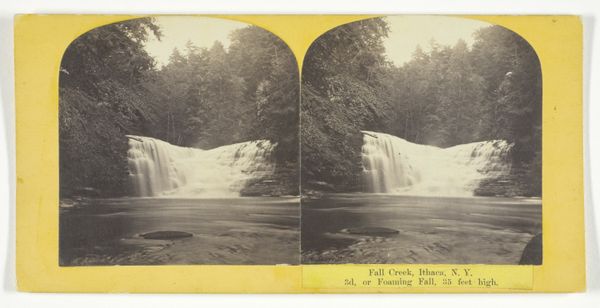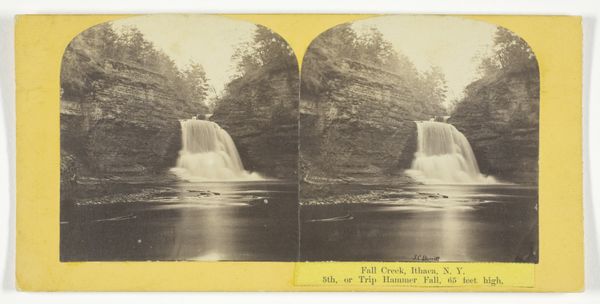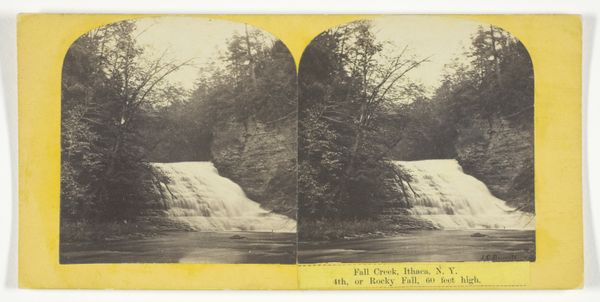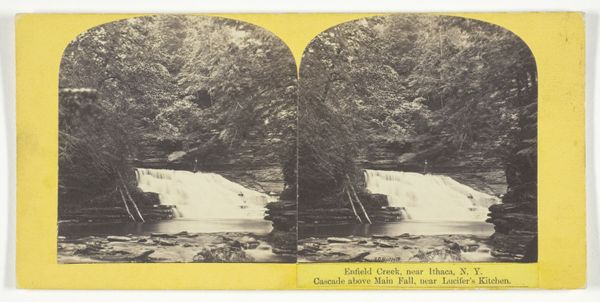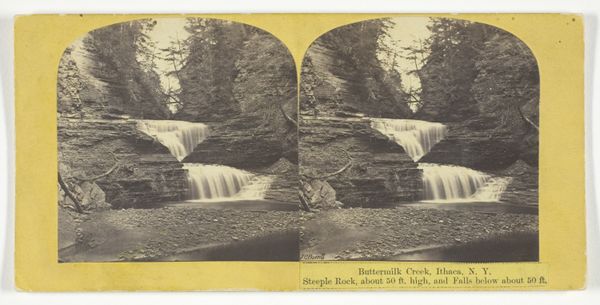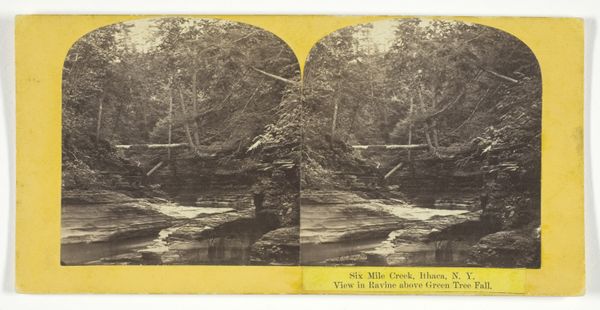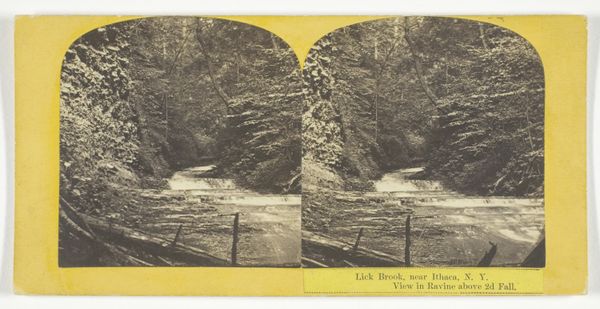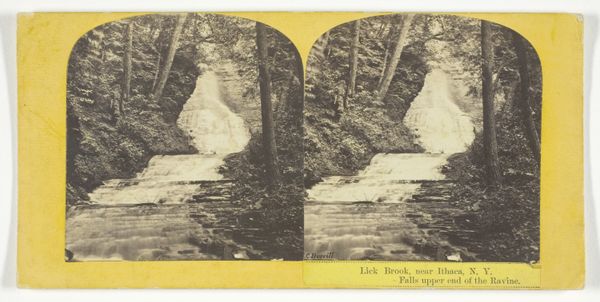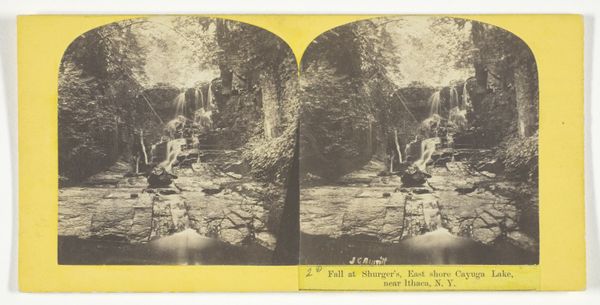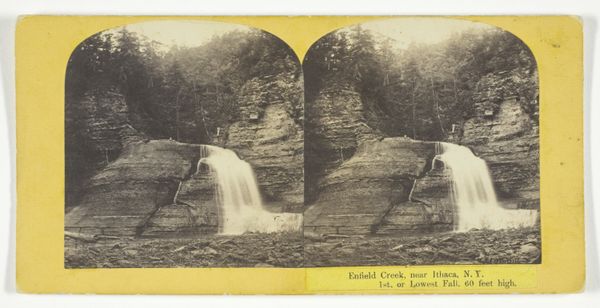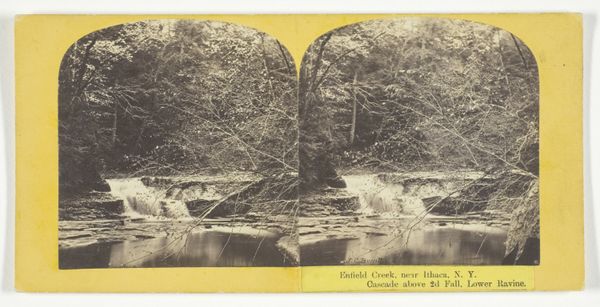
Fall Creek, Ithaca, N.Y. 2d, or Forest Fall, 60 feet high, from the dam 1860 - 1865
0:00
0:00
print, photography
# print
#
landscape
#
photography
#
hudson-river-school
#
realism
Dimensions: 7.5 × 7.2 cm (each image); 8.4 × 17.1 cm (card)
Copyright: Public Domain
This stereograph of Fall Creek in Ithaca, New York, by J.C. Burritt, invites us to consider the material reality of photographic representation. The image is printed on two small pieces of paper, mounted side-by-side on card stock. When viewed through a stereoscope, the slightly different perspectives merge to create a convincing illusion of three-dimensionality. Photographs like this were not simply captured; they were made. The photographer carefully selected the viewpoint, framed the shot, and developed the image using a complex chemical process. While appearing to offer a direct window onto the world, the stereograph is in fact a carefully constructed artifact. The mass production of images like this was directly tied to broader social and economic forces. The rise of photography coincided with the growth of industrial capitalism, and the demand for affordable, easily reproducible images fueled technological innovation in both photography and printing. So next time you see an old photograph, remember that it's not just a picture, it's also a product of its time, shaped by the tools, techniques, and social forces that brought it into being.
Comments
No comments
Be the first to comment and join the conversation on the ultimate creative platform.
